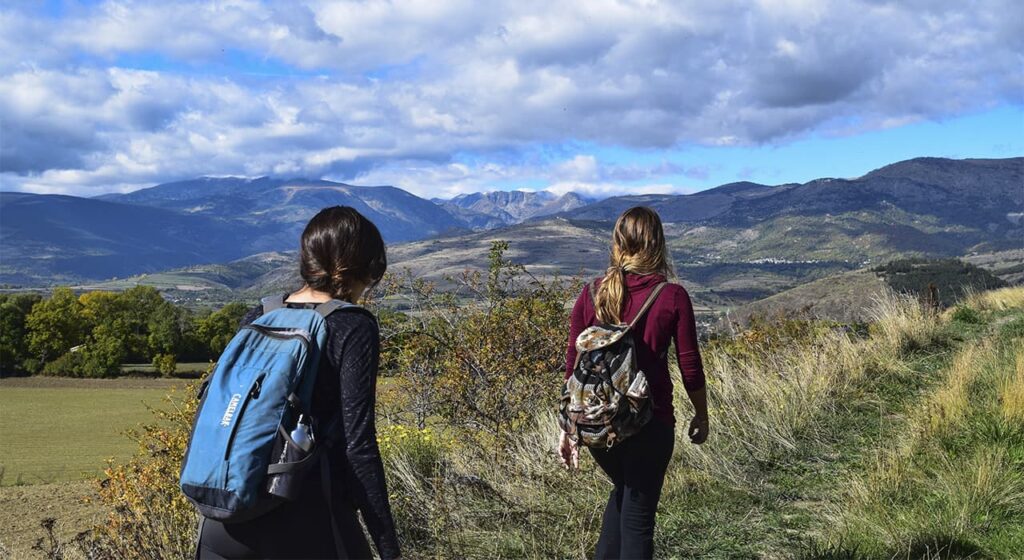Summer is the time to travel and hike. After discussing the details and choosing a route, the question of what kind of food to take with you naturally comes up. Bad is the hiker who does not think about this important part in detail, and completely wrong is the one who hopes that in the fresh air all tasty, even bread and water. Of course, there is no difference between a hike and a one or two day trip around the area, and that can be good for a bad mood and other problems during the multi-day hike in the mountains. Let’s focus on the hiking trip of a small (2-5 people) group during a week with short stops. Such hikes are one of the best types of recreation in a beautiful mountain area. It is worth deciding in advance whether it will be a hike a group or just a company of singles and couples going in the same direction and ready to split up at any time. This will determine a lot: the presence of a common boiler and the calculation of products individually or for the entire group. Both approaches have pros and cons. Singles have to rely only on their own strength, but there is an opportunity to choose a menu to suit their tastes. Eating in a group can be much easier, but in this case it is not up to varieties.
What’s better to cook. What foods to stock up on.It is best to start with what you should not take with you into the hike. Glassware: glasses, cups, bottles and jars – better to leave at home. Anything that can crack, leak, or has a fragile structure is also better left at home. Metal thermoses (unless you’re going to the mountains or it’s a cold season), flasks, cans, etc. Camping food should not be perishable: boiled sausage, fried chicken, boiled eggs, smoked fish, stewed or fresh, soft and juicy vegetables, prepared salads and soft cakes.
Camping food and its quantity always depends on the intended resting place, as well as the time en route and the availability of stores or other sources of replenishment of supplies. In any case, each participant should have an “emergency supply”. It’s good to have “goodies” that will be very handy for tea, even if the packaging is uncomfortable. This can be a pack of halvah, chocolate or a can of condensed milk (if you can’t find condensed milk in a “lightweight” soft pack). The group should have supplies for autonomous cooking (utensils, a gas burner or matches). Cutlery is strictly individual items.
Number and sometimes the principle composition of products for the campaign depends on its duration, complexity, type of terrain and personal preferences. People go to the campaign, as a rule, not in order to eat a lot. Homemade food stays at home, let the thought of it stimulate the return and warm the soul pleasantly. Food in the campaign serves to maintain strength, so that the hike was successful, and the mood and health strengthened, rather than deteriorating and weakened. Based on this, you need to choose a balanced set of products, not forgetting that all this balance will have to carry on their shoulders.
As the basis of food in the campaign need carbohydrates: buckwheat, rice, corn, barley or pasta (preferably spiral – they stick together less than others). Meat in the campaign is needed in a small amount. It can be dried, dried or canned meat. If you decide to indulge yourself with sausage – take uncooked, vacuum-packed. Basturma and suzhuk can be well preserved for a long time (taste is a matter of taste). It’s better to buy canned meat in small tin cans or to have one big tin for every participant of the expedition. Meat even with heavy loads can be eaten only rarely – once in 3-4 days or even more rarely.
For vegetarians it is not difficult to find protein foods, such as legumes (mash, peas, soybeans, beans) in dry or cooked form. Dry foods are always preferred because they contain more nutrients. In addition to side dishes and meat, it’s a good idea to take dried vegetables, mushrooms, herbs, milk, nuts, and dried fruit with you. As a quick refreshment in the middle of the day you can make granola. Self-cooked is preferable, as camping muesli should have more nuts and dried fruit than cereal. After determining the optimal composition of products, you can add some “liberties” in the form of a good black, green or herbal tea – these little pieces of comfort will be just right in the ascetic hiking conditions. Take sour or mint lollipops – can be useful at altitude from dizziness or nausea on the train. A small amount of honey, ginger, or pepper can spice up a monotonous meal, or it can help with a sudden cold. You can take some wine with you. (Red is preferable.) Pour it into a plastic bottle. You should not take a lot of alcohol, especially on difficult hikes. First, it is heavy to carry, and secondly, water is more important.
